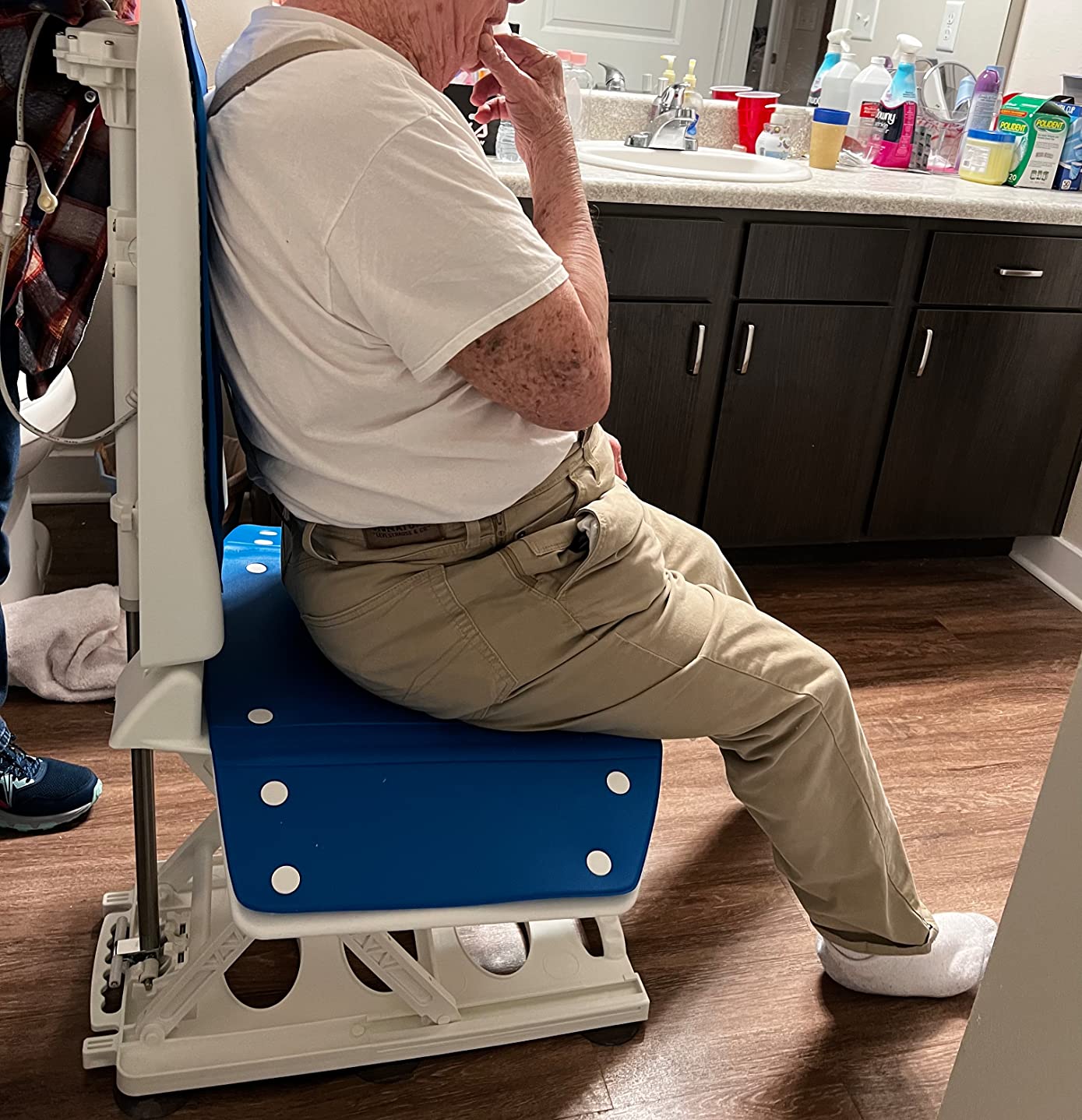Every year, millions of elderly individuals face the frightening experience of falling and struggling to get up. Without proper assistance, this situation can lead to prolonged floor time and increased anxiety.
The most effective aids for getting off the floor after a fall include inflatable lift cushions, floor-to-stand lifts, and gait belts with handles. These devices provide safe, controlled assistance while reducing the risk of injury to both the fallen person and their caregiver.
I've spent years developing and testing various floor recovery aids, and I understand the critical importance of having the right equipment readily available. Let's explore the most effective solutions that can help someone safely get up after a fall.
How Does A Ground Lift Chair Help Someone Who Has Fallen?
Many seniors feel helpless and vulnerable when they fall, unsure how to safely return to a standing position. This situation can be dangerous for both the fallen person and their caregiver.
Ground lift chairs use air-powered or battery-operated mechanisms to gently raise a person from floor level to a seated or standing position, providing controlled and dignified assistance while preventing caregiver strain.
!
Through my experience in developing floor recovery solutions, I've identified several key features that make ground lift chairs particularly effective:
Key Components of an Effective Ground Lift Chair:
-
Safety Features
- Non-slip base material
- Stable lifting mechanism
- Emergency stop button
- Weight capacity indicators
-
Comfort Elements
- Padded seating surface
- Adjustable rise speed
- Multiple height settings
- Ergonomic handle placement
-
Practical Considerations
- Portable and lightweight design
- Quick setup process
- Easy-to-clean surfaces
- Compact storage options
What's The Best Way To Help Someone Get Up Off The Floor?
The immediate aftermath of a fall can be confusing and stressful. Without proper knowledge and tools, helping someone up could result in injury to both parties.
The safest approach combines proper body mechanics with appropriate assistive devices, following a step-by-step process that ensures stability and prevents additional falls or injuries.

I've trained numerous caregivers and family members in safe floor recovery techniques, and I always emphasize the importance of following a systematic approach:
Essential Steps for Safe Floor Recovery:
-
Initial Assessment
- Check for injuries
- Assess consciousness
- Determine ability to participate
- Ensure surrounding area is clear
-
Positioning
- Roll to side if appropriate
- Move to hands and knees if possible
- Place assistive device correctly
- Position helper appropriately
-
Recovery Process
- Use stable furniture if available
- Apply assistive device properly
- Move through stages gradually
- Maintain proper balance
What Equipment Can Help Someone Get Up After A Fall?
I often encounter families struggling to find the right equipment for fall recovery. The wrong choice can lead to frustration and potential injury.
The most effective floor recovery equipment combines stability, ease of use, and portability, while accommodating different physical capabilities and space constraints.

"Floor recovery equipment options")
Based on extensive product testing and customer feedback, I've compiled a comprehensive analysis of the most effective floor recovery aids:
Equipment Comparison:
| Device Type | Best For | Key Benefits | Considerations |
|---|---|---|---|
| Inflatable Lift | Limited mobility | Gentle rise, compact storage | Requires power source |
| Gait Belt | Partial weight-bearing | Affordable, portable | Requires helper strength |
| Floor-to-Stand Lift | Non-weight-bearing | Maximum support | Needs space, more expensive |
| Rising Aid | Independent users | Promotes autonomy | Requires upper body strength |
How Can You Safely Help A Person Off The Floor After A Fall?
The moments following a fall are crucial, and proper technique can mean the difference between a successful recovery and additional injury.
Proper assessment, clear communication, and appropriate use of assistive devices are essential components of safe floor recovery assistance.
My research and development team has identified several critical factors that contribute to successful floor recovery:
Safety Protocol for Floor Recovery:
-
Environmental Factors
- Adequate lighting
- Clear floor space
- Non-slip surfaces
- Accessible assistance devices
-
Physical Considerations
- Person's weight and height
- Upper body strength
- Balance capability
- Previous fall history
-
Recovery Methods
- Two-person assistance techniques
- Single-helper approaches
- Device-assisted methods
- Independent strategies
Conclusion
Selecting the right floor recovery aid depends on individual needs, physical capabilities, and available assistance. By combining appropriate equipment with proper technique, we can significantly reduce the risk and anxiety associated with falls.
